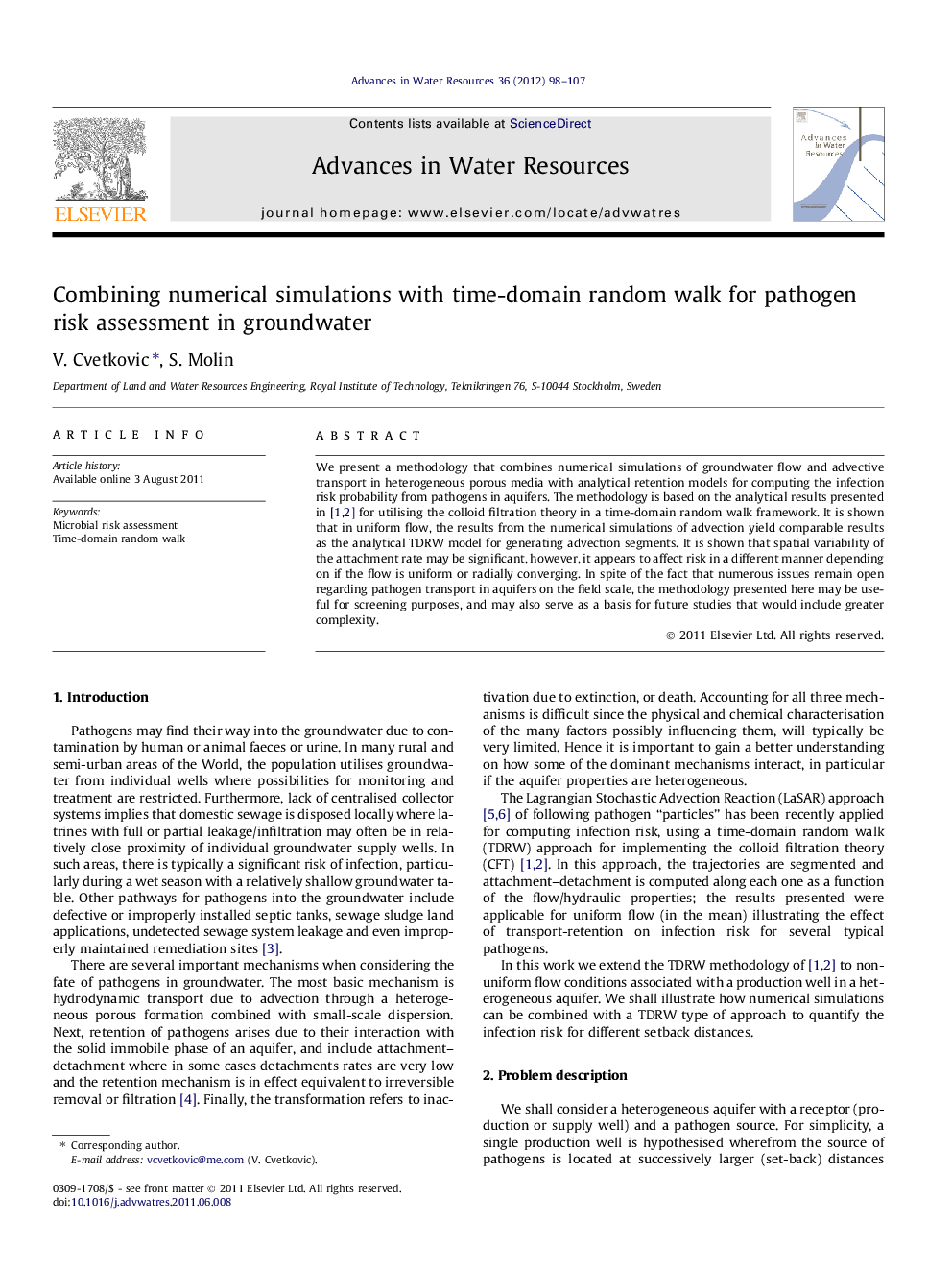| کد مقاله | کد نشریه | سال انتشار | مقاله انگلیسی | نسخه تمام متن |
|---|---|---|---|---|
| 4526030 | 1625672 | 2012 | 10 صفحه PDF | دانلود رایگان |

We present a methodology that combines numerical simulations of groundwater flow and advective transport in heterogeneous porous media with analytical retention models for computing the infection risk probability from pathogens in aquifers. The methodology is based on the analytical results presented in [1] and [2] for utilising the colloid filtration theory in a time-domain random walk framework. It is shown that in uniform flow, the results from the numerical simulations of advection yield comparable results as the analytical TDRW model for generating advection segments. It is shown that spatial variability of the attachment rate may be significant, however, it appears to affect risk in a different manner depending on if the flow is uniform or radially converging. In spite of the fact that numerous issues remain open regarding pathogen transport in aquifers on the field scale, the methodology presented here may be useful for screening purposes, and may also serve as a basis for future studies that would include greater complexity.
► Infection risk probability from pathogens in aquifers is computed.
► Colloid filtration theory is set in a time-domain random walk framework.
► In uniform flow, advection simulations yield comparable results as TDRW model.
► Spatial variability of attachment rate affects risk differently depending on flow.
Journal: Advances in Water Resources - Volume 36, February 2012, Pages 98–107